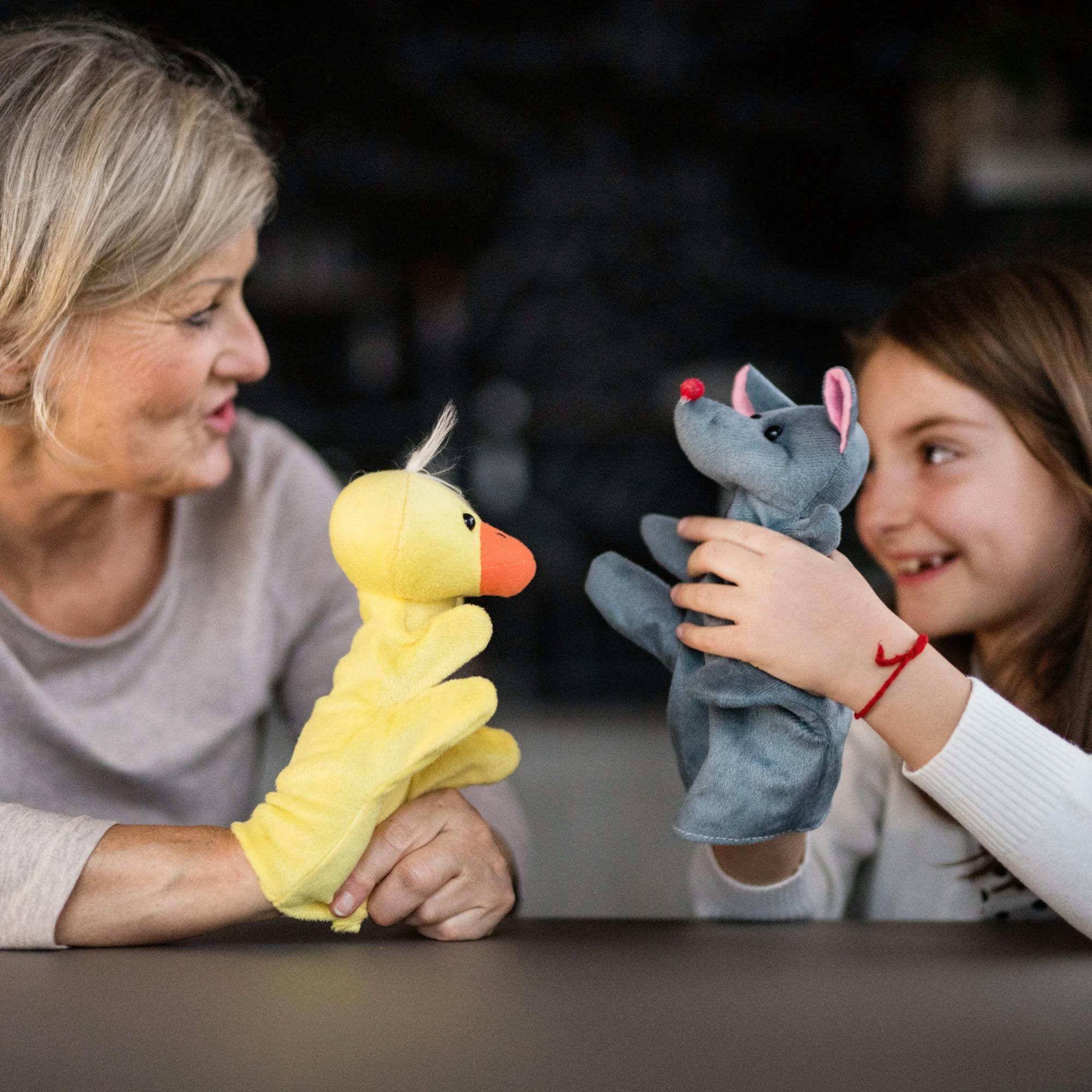When you’re a parent, your daily routine is often a busy one. There are meals to make, errands to run, games to play… drop-offs and pickups and work… you’re likely balancing a lot! So if your child is working on their speech and language skills, you’re probably looking for a quick and simple way to fit in speech practice at home.
Luckily, it’s easy to practice speech during everyday activities that you’re already doing. One time to focus on is the morning routine, when you’re helping your child get ready for the day. There are plenty of opportunities to work on speech and language while you’re doing hair, brushing teeth, or getting dressed!
For children learning to talk
If your child is at the beginning stages of talking, these next tips will be helpful.
Teach your child the names of things
When your child is learning to talk, you can start with naming objects. You can teach your toddler the names of different clothes or items used while getting ready: pants, socks, comb, toothbrush, etc. Do this by repeating the names often and talking about the items, too. It might sound like this: “Let’s put your shirt on. Here’s your shirt. Blue shirt.”
If your child imitates you and says the word, great! But keep in mind, even if they don’t repeat the word after you, they’re still listening and learning from what you say. When you model words for your toddler, you’re helping to build their receptive language, which refers to the words they can understand.


Teach your child how to ask for something
“Requesting” is another excellent skill to practice with your early communicator. Teach them words or gestures they can use to request something. For example, you can teach them to sign or ask for “help” if they need help squeezing the toothpaste or putting on their shoes.
If your toddler wants to wear a certain clothing item, you can teach them to ask for it by naming the item or pointing to it. Simple gestures like pointing can be a great stepping stone for kids as they’re learning to use more words.
Help your child use longer phrases
If you want to teach your child to start stringing words together, focus on simple two-word phrases they can repeat after you. First, find a word they already use. Say the word is “shoe.” You can model the phrases “Shoes on” or “My shoe” and see if they’ll imitate you.
However, don’t put too much pressure on your child to say the phrase. They may pick up on that pressure and be less likely to try to say it. Just keep things light and playful. One morning, your child will surprise you!
Help your child with receptive language
You can also try a few fun receptive language tasks. This is where you assess what your child knows and help them build on their skills.
When you’re getting your toddler dressed, lay out some clothes–maybe a pair of socks, their sweatshirt, and their jacket. Ask them to point to each item to see if they can identify it. Try, “Where’s your sweatshirt?” or “Point to your socks!” You can rotate items out of the group and put new ones in.
Following simple directions, or even multistep directions depending on their age, can also grow your child’s receptive language skills. For kids who are learning to follow single-step directions, give them some simple tasks. An example might be “Go stand by the sink” or “Sit down on the floor.” As your child’s skills grow, try some two-step directions. You might try, “Get your brush and bring it to me,” or “Sit down and put on your socks.”
For children working on more advanced language skills
If your child is practicing more advanced language skills, they may be old enough that you aren’t exactly getting them dressed everyday. But you still play a role in their general morning routine. So take this opportunity to practice!
Help your child with sequencing
Some kids need to learn to organize their thoughts so they can relay information clearly and communicate through storytelling. Think about it: As kids get older, we expect them to be able to tell us generally what happened at school, on a playdate, or at soccer practice.
In order to do that, kids need to be able to sequence. This means they can communicate, “First we did ____, then we did ____, and last we ______.”
To see how your child is doing with sequencing, you can ask them to tell you what they did to get ready that morning. They may need some help doing this. If they get stuck, you can ask things like, “What did you do after you brushed your teeth?” or “What did you do next?”


Working with your child on grammar
Some children need a little help with their grammar skills. As cute as their errors can be, it’s important for them to learn correct grammar over time.
To help them, have a normal, everyday conversation with your child as you’re helping them get ready. You might do this while making sure they get in and out of the shower OK, while you’re doing their hair, or while you’re helping them pick out an outfit. Ask them questions, and respond as needed if you hear an error in their answers. They may say something like, “I like that shirt more better” or “Ouch! The brush hurted me!” After you respond to what your child is trying to tell you, you can then explain to them what they should have said: “I like that shirt better” or “The brush hurt me!”


For children focusing on speech sounds
If you’ve got a child working on pronouncing certain speech sounds or words, try practicing a few of their targets during morning tasks. You might have them practice saying a few /s/ words while they get their shoes on, or /l/ words while they put things in their backpack. Even just practicing 10 words here and there is beneficial!
You can also practice target sounds as you engage in conversation. If you hear any errors in their speech, help them correct the mistake. You can model the correct way to say the word and tell them how to move their mouth or tongue. For example, for the /s/ sound, you might say, “Remember to keep your tongue in your mouth.”
When your child is at the point of practicing independently, see if they can correct the error without much help from you.


Your role in helping your child practice speech at home
When kids are working on their communication skills, it can’t be overstated how important daily practice is. Kids learn best from people they’re comfortable with and see every day. So who better to practice with than you? The more you work on these skills together, the faster your child will make progress! However, it’s important to notice when your child needs a break. In many cases, just 5 to 15 minutes of practice is enough. But if your child is getting frustrated, be sensitive to that, and let them take a break. You can resume practice another time. Remember to give your child lots of encouragement and praise. Let them know you see how hard they’re working. We want speech practice to be positive, not stressful. So most importantly, have fun together! The learning will come naturally when the two of you are enjoying the moment.
Are you concerned about your child’s speech?
Reach out to us here at Expressable. You can get matched with one of our licensed speech therapists by clicking here. You can also take our easy online self-screener for some quick insight into whether your child could benefit from a speech therapy evaluation.
How Expressable Can Help
Concerned your child isn't reaching age-expected milestones? Looking for communication support from a professional? Expressable is a national online speech therapy practice serving children and adults. We treat all major areas of communication and feeding, offer flexible hours including evenings and weekends, and accept most major health insurance plans. We’re proud to have earned more than 3,000 5-star reviews from our clients (4.9/5 average).
Our therapy model is centered on parent and caregiver involvement. Research proves that empowering caregivers to participate in their loved one’s therapy leads to better outcomes. That’s why we combine live, 1-on-1 speech therapy with personalized education and home practice activities for faster progress.
Communication is more than words. It’s how we share how we feel and show who we are. We’re here to help you or your child do just that.

 Abby Barnes, M.S., CCC-SLP
Abby Barnes, M.S., CCC-SLP










